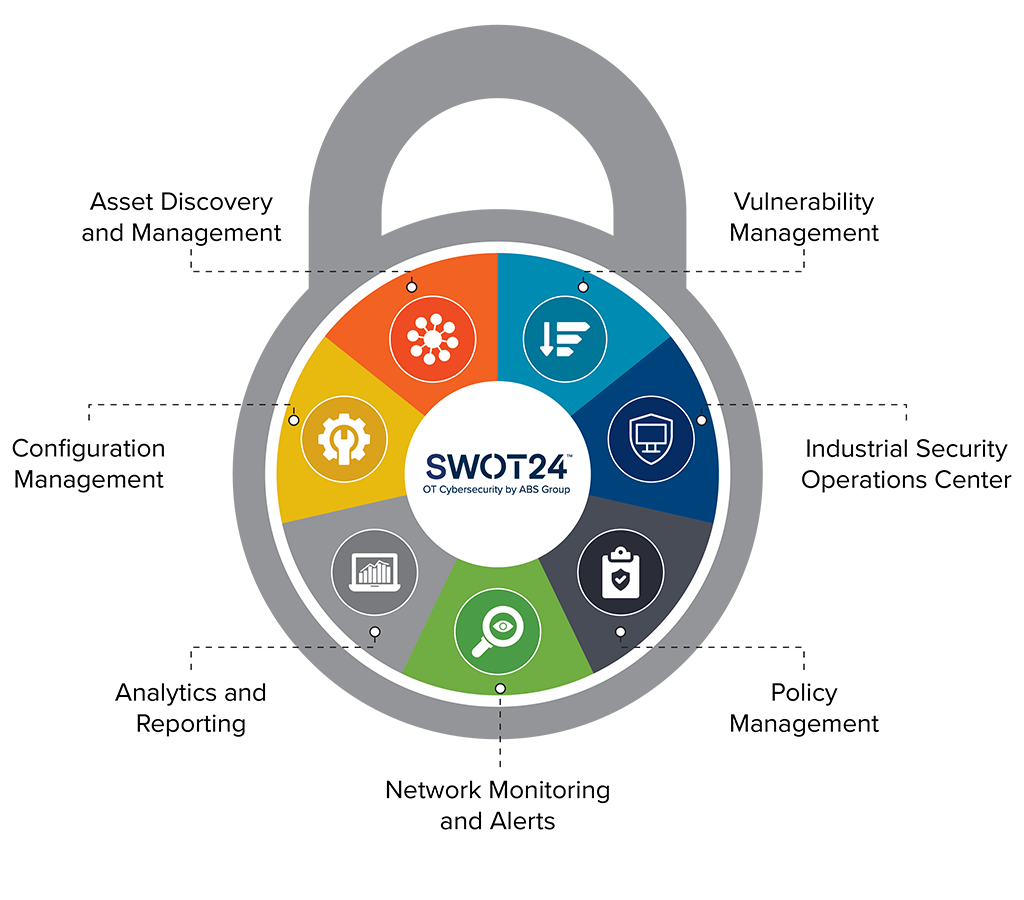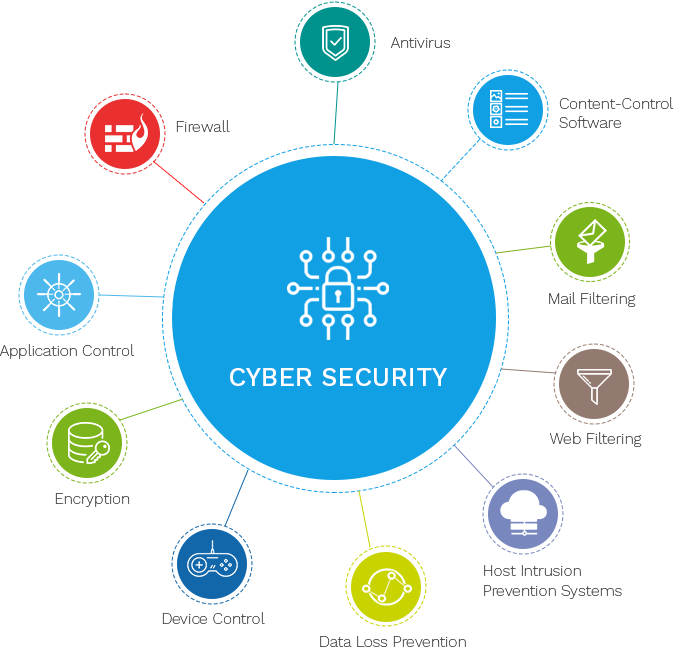Checking Out Exactly How Cyber Safety Functions to Guard Your Online Visibility
In today's electronic landscape, shielding one's on the internet existence has come to be significantly vital, with cyber risks developing at an alarming rate. Cyber safety and security uses a diverse approach, integrating innovative innovations like firewalls, file encryption, and multi-factor verification to protect delicate information. How do these modern technologies work with each other to create a seamless guard against cyber dangers?
Comprehending Cyber Threats
In the electronic landscape, cyber threats represent a powerful difficulty, calling for a nuanced understanding of their nature and prospective influence. These risks incorporate a vast array of malicious activities orchestrated by individuals, groups, and even nation-states, targeting delicate data, interfering with procedures, or causing reputational damage. Comprehending cyber hazards begins with determining the different forms they take, including malware, phishing, ransomware, and distributed denial-of-service (DDoS) assaults.
Malware, or destructive software, includes viruses, worms, and trojans that infiltrate systems to take information or create harm (Best Cyber Security Services in Dubai). Phishing attacks trick users into revealing confidential info, often by masquerading as trustworthy entities. Ransomware encrypts targets' data, requiring a ransom money for its launch, posturing significant operational and financial risks. DDoS attacks aim to overwhelm systems, rendering them unusable and disrupting services.
Acknowledging the motivations behind these hazards is vital. Cybercriminals typically seek financial gain, while hacktivists might seek ideological goals. State-sponsored assaulters could target critical framework for reconnaissance or destabilization functions. By comprehensively understanding the varied nature of cyber risks, companies can better prepare for possible susceptabilities and tactically allot sources to bolster their defenses versus these ever-evolving risks.
Secret Cyber Safety And Security Technologies
As companies aim to protect their digital possessions, key cybersecurity innovations play an important duty in fortifying defenses versus cyber risks. These modern technologies encompass a wide range of tools and approaches developed to shield data stability, discretion, and availability. In today's electronic landscape, breach detection systems (IDS) and intrusion prevention systems (IPS) are crucial. IDS monitor network web traffic for dubious tasks, while IPS actively obstruct prospective threats, guaranteeing real-time defense.
Furthermore, anti-viruses and anti-malware solutions remain basic in recognizing and mitigating destructive software. They employ heuristic and signature-based techniques to spot recognized and unknown risks. Endpoint detection and reaction (EDR) systems even more improve safety and security by offering detailed exposure into endpoint activities, enabling swift incident feedback.
Identification and gain access to administration (IAM) innovations make sure that just licensed users get to essential sources, consequently minimizing the danger of unauthorized information accessibility. Multifactor authentication (MFA) adds an added layer of safety, needing users to give numerous verification factors.
In addition, safety and security information and occasion administration (SIEM) systems aggregate and examine safety and security data, using insights right into possible vulnerabilities and promoting positive risk management. These modern technologies collectively form a durable framework, equipping organizations to preserve a resilient cybersecurity pose.
Duty of Firewalls and Security
Firewall softwares and security are essential parts of a robust cybersecurity approach, each serving an unique yet complementary duty in protecting electronic environments. Firewall softwares act as barriers between relied on internal networks and untrusted exterior entities. By controlling outward bound and incoming network web traffic, they prevent unapproved access to systems and information. Firewall softwares make use of predefined safety and security rules to obstruct or permit data packets, effectively shielding delicate information from cyber risks. They are the first line of protection, filtering system website traffic and making certain just legitimate interactions are permitted.
Security, on the various other hand, transforms legible information into an encoded format that can just be understood with a certain cryptographic secret. Encryption is critical for shielding delicate details such as monetary data, individual identification information, and proprietary business information.
With each other, firewall programs and file encryption offer an extensive defense reaction. While firewalls take care of accessibility and shield networks from unapproved entrance, security safeguards data honesty and privacy. Their combined application is important in mitigating risks and making sure the security of electronic assets in a significantly interconnected world.

Value of Multi-Factor Verification
While firewall programs and file encryption develop the backbone of cybersecurity, improving defenses even more requires the execution of multi-factor Visit Website verification (MFA) MFA includes an extra layer of safety and security by needing users to verify their identification via two or even more various aspects before accessing to delicate info or systems. These variables typically consist of something the individual knows (a password), something the user has (a protection token or smart device), and something the individual is (biometric verification such as a fingerprint or facial acknowledgment)
The value of MFA in protecting online visibility is vital in today's digital landscape. With cyber hazards coming to be significantly advanced, relying exclusively on conventional password-based verification leaves systems prone to breaches. MFA dramatically lowers the threat of unauthorized accessibility by making it tremendously a lot more tough for cybercriminals to jeopardize an account. Also if a password is taken, the added confirmation steps function as an awesome barrier.

Behavioral Analytics in Cyber Security
Behavior analytics represents an essential development in cybersecurity, supplying an advanced strategy to threat discovery and prevention. By examining patterns in user habits, this method determines abnormalities that may show possible cyber hazards. Unlike standard safety measures, which commonly depend on predefined guidelines and trademarks, behavioral analytics leverages artificial intelligence and statistical versions to develop a baseline of typical task. When deviations from this baseline occur, it activates signals for further investigation, making it possible for much faster response times to prospective violations.
This technology is particularly efficient in detecting insider threats and zero-day attacks, which are frequently missed by conventional safety and security systems. Insider dangers, where people within an organization abuse accessibility opportunities, can be tough and particularly harmful to identify. Best Cyber Security Services in Dubai. Behavior analytics supplies a layer of examination that can catch subtle deviations in behavior, such as unusual access patterns or data transfers, prior to they rise right into considerable safety and security incidents
Furthermore, the dynamic nature of behavior analytics permits it to adapt to developing threats, giving continual security as cyberattack techniques alter. As organizations increasingly count on electronic facilities, incorporating behavior analytics into cybersecurity strategies makes certain a resistant protection, protecting delicate information and maintaining rely on digital interactions.
Verdict
Finally, the multifaceted strategy of cyber safety and security, encompassing innovations such as firewalls, security, multi-factor verification, and behavioral analytics, plays a vital role in securing online existence. By filtering web traffic, safeguarding information transmission, needing multiple verification approaches, and keeping track of individual task for anomalies, these modern technologies jointly resolve the complexities of modern-day cyber click resources threats. This split protection not only safeguards financial and personal information however additionally makes certain continuous security in an ever-evolving electronic landscape.

As organizations make every effort to secure their digital properties, crucial cybersecurity technologies play a crucial function in fortifying defenses versus cyber dangers. Firewalls make use of predefined safety rules to obstruct or permit information packets, efficiently protecting sensitive info from cyber dangers.This innovation is particularly effective in detecting expert dangers and zero-day attacks, which are commonly missed by standard safety and security systems. By filtering system traffic, protecting information transmission, calling for several confirmation methods, and keeping an eye on user activity for abnormalities, these technologies collectively attend to the intricacies of modern cyber risks.